Strange History Of Stele Of Ankh-ef-en-Khonsu – ‘Stele Of Revealing’ Gave Birth To Thelema, A New Religion
Ellen Lloyd - AncientPages.com - Stele of Ankh-ef-en-Khonsu is an ancient Egyptian artifact that is also known as the "Stele of Revealing". Made of wood and covered with a painted plaster gesso, the stele was discovered in 1858 by François Auguste Ferdinand Mariette at the mortuary temple of the Dynasty 18 Pharaoh Hatshepsut, located at Dayr al-Bahri, on the west bank of the Nile, opposite the city of Luxor, Egypt.
The Stele Was Made For Montu-priest Ankh-ef-en-Khonsu
Depicting priests and priestesses, the funeral stele was made for Montu-priest Ankh-ef-en-Khonsu I, who lived in Thebes during the 25th and 26th dynasty.
Left: Stele Cairo A 9422 (Bulaq 666), depicting Nut, Behdety as the winged solar disk, Re-Harakhty seated on his throne, and the stele's owner, Ankh-ef-en-Khonsu i, Credit: Wikipedia - Right: Back of the stele. Credit. thelema101.com
It was found near his coffin. The top of the stele is decorated with an image of the sky goddess Nut. Depictions of the solar disk, table of offerings, and the god Re-Horakhty, Horus of the horizons are also clearly visible on the stele of Ankh-ef-en-Khonsu.
The stele was first kept in the former Bulaq Museum under inventory number 666. Later, around 1902 it was moved to the Egyptian Museum of Cairo (inventory number A 9422; Temporary Register Number 25/12/24/11), where it remains today.
The meaning of the name Ankh-ef-en-Khonsu has been debated. In The Scarlet Letter, Sr. Lutea suggests that the name may be closely related to the Ankh, which is both a tool and a symbol meaning 'new life.' According to Sr. Lutea the entire name may be translated as 'the truth that has crossed over.
Ancient Pages discussed the significance of the Ankh in a previous article.
As we mentioned, the Ankh is a mysterious ancient Egyptian symbol with many meanings and unknown history. It is one of many important ancient Egyptian symbols.
But is there really a connection between the Ankh and the priest Ankh-ef-en-Khonsu? Perhaps there is but most Egyptologists today translate the Montu-priest’s name as "He lives for Khonsu”. In Egyptian mythology, Khonsu is the god of the moon and he plays an important role in the creation of new life in all living creatures.
How The Stele Of Ankh-ef-en-Khonsu Became Associated With Thelema
Stele of Ankh-ef-en-Khonsu would most likely remain one of many Egyptian artifacts and go unnoticed, but it caught the eye of British occultist Aleister Crowley (1875 – 1947) and it has been connected with him and his new religion Thelema, ever since.
During a visit to Cairo in 1904, Crowley and his wife Rose saw the stele of Ankh-ef-en-Khonsu and Crowley became convinced that the stele had been produced to commemorate his own death 2500 years ago.
Khonsu, the ancient Egyptian moon-god, was depicted either as a falcon wearing the moon-disk on his head (left) or as the child of Amun and Mut. Credit: Public Domain
Crowley came to believe that he was a reincarnation of priest Ankh-ef-en-Khonsu. He claimed that this knowledge came to him while he heard the voice from an entity he called Aiwass who dictated to him Liber al vel Legis, the Book of the Law. Crowley was the scribe, so he must have been Ankh-f-n-khonsu, or so he said.
Of course, the belief in reincarnation was not an Egyptian concept. Ancient Egyptians believed in afterlife, but they did not consider it likely that a soul left a body and then returned to a different body.
This notion did not stop Crowley who now believed that he was the prophet of a New Age, the Aeon of Horus. When Crowley and his wife Rose visited the museum to look at the stele they noticed its catalogue number was 666, a number holding religious significance in Thelema.
See also:
Khonsu: Enigmatic Egyptian Moon God, Healer, Protector And His Dark Side
Mesha Stele: One Of The Most Valuable Biblical Artifacts
Stele Of Tell al-Rimah And Deeds Of Assyrian King Adad-nirari Against Rebellious Kings
Sumerian Stele Of The Vultures: Oldest Known Historical Records Carved On Limestone
To Christians, it is the Number of the Beast, but Crowley considered it to be a solar number. It is the sum of the numbers inside the 6-by-6 magic square, which is associated with the Sun. Crowley wrote in his biography that his purpose in life had been to "bring oriental wisdom to Europe and to restore paganism in a purer form". He became convinced that the twentieth century marked humanity's entry to the Aeon of Horus, a new era, in which humans would take increasing control of their destiny.
His new religion Thelema, sometimes also referred to as the New Age movement, or just new philosophy was based on the idea that human beings each have their own True Will that they should discover and pursue, and that this exists in harmony with the Cosmic Will that pervades the universe.
Thelema, greatly influenced by the Stele Of Ankh-ef-en-Khonsu continued to develop and spread following Crowley's death.
Written by Ellen Lloyd – AncientPages.com
Copyright © AncientPages.com & Ellen Lloyd All rights reserved. This material may not be published, broadcast, rewritten or redistributed in whole or part without the express written permission of AncientPages.com and Ellen Lloyd
More From Ancient Pages
-
 Two Well-Preserved Shipwrecks Found By Swedish Maritime Divers In Baltic Sea
Archaeology | Jan 30, 2018
Two Well-Preserved Shipwrecks Found By Swedish Maritime Divers In Baltic Sea
Archaeology | Jan 30, 2018 -
 Strange 1,000-Year-Old Artifact Melted Out Of The Ice Identified With Help Of Photo!
Archaeology | Jan 31, 2023
Strange 1,000-Year-Old Artifact Melted Out Of The Ice Identified With Help Of Photo!
Archaeology | Jan 31, 2023 -
 Mystery Of The Hidden Shoes Discovered In Ancient European Houses – What Is Behind This Bizarre Tradition?
Featured Stories | Oct 2, 2021
Mystery Of The Hidden Shoes Discovered In Ancient European Houses – What Is Behind This Bizarre Tradition?
Featured Stories | Oct 2, 2021 -
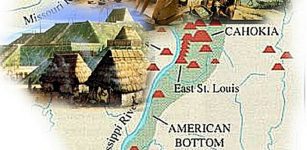 Unsolved Mysteries Of Cahokia – What Really Happened With The Large Metropolis?
Civilizations | Jan 15, 2015
Unsolved Mysteries Of Cahokia – What Really Happened With The Large Metropolis?
Civilizations | Jan 15, 2015 -
 Undeciphered Ancient Code Could Be Evidence Of The World’s Oldest Data Storage System
Archaeology | Feb 27, 2014
Undeciphered Ancient Code Could Be Evidence Of The World’s Oldest Data Storage System
Archaeology | Feb 27, 2014 -
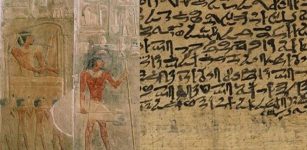 Secrets Of Maxims Of Ptahhotep – Ancient Egyptian Wisdom Is Still Relevant Today
Artifacts | Mar 10, 2018
Secrets Of Maxims Of Ptahhotep – Ancient Egyptian Wisdom Is Still Relevant Today
Artifacts | Mar 10, 2018 -
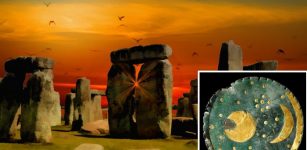 Dark History Of Pömmelte, The German Stonehenge – What Can The Nebra Sky Disc And Archaeology Reveal?
Archaeology | Jul 3, 2018
Dark History Of Pömmelte, The German Stonehenge – What Can The Nebra Sky Disc And Archaeology Reveal?
Archaeology | Jul 3, 2018 -
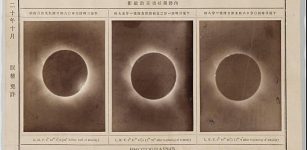 Astronomers Confirm Solar Eclipses Mentioned In Indigenous Folklore And Historical Documents In Japan
Folklore | Nov 9, 2022
Astronomers Confirm Solar Eclipses Mentioned In Indigenous Folklore And Historical Documents In Japan
Folklore | Nov 9, 2022 -
 Political Debates In Ancient Rome: Great Harshness, Personal Attacks And Unpleasant Atmosphere
Archaeology | Aug 29, 2018
Political Debates In Ancient Rome: Great Harshness, Personal Attacks And Unpleasant Atmosphere
Archaeology | Aug 29, 2018 -
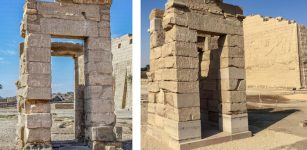 Ancient Egyptian Monuments Threatened By Climate Change Restored By Oriental Institute
News | Mar 9, 2023
Ancient Egyptian Monuments Threatened By Climate Change Restored By Oriental Institute
News | Mar 9, 2023 -
 On This Day In History: John Dee, English Mathematician, Occultist, Astrologer, Astronomer Was Born – On July 13, 1527
News | Jul 13, 2016
On This Day In History: John Dee, English Mathematician, Occultist, Astrologer, Astronomer Was Born – On July 13, 1527
News | Jul 13, 2016 -
 Incredible 2,300-Year-Old Roman-Etruscan Time Capsule Opened In San Casciano dei Bagni, Italy
Featured Stories | Dec 20, 2023
Incredible 2,300-Year-Old Roman-Etruscan Time Capsule Opened In San Casciano dei Bagni, Italy
Featured Stories | Dec 20, 2023 -
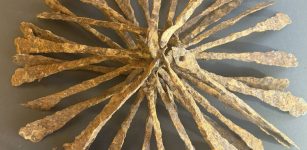 Rare Viking Age Treasure Found By Woman Cleaning The House
Archaeology | Apr 20, 2023
Rare Viking Age Treasure Found By Woman Cleaning The House
Archaeology | Apr 20, 2023 -
 Unique Ancient Roman Boxing Gloves Discovered Near Hadrian’s Wall – The Only Surviving Example From 120 A.D.
Archaeology | Feb 20, 2018
Unique Ancient Roman Boxing Gloves Discovered Near Hadrian’s Wall – The Only Surviving Example From 120 A.D.
Archaeology | Feb 20, 2018 -
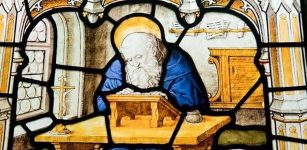 On This Day In History: Feast Day Of The Venerable Bede – Remarkable Priest, Monk And Scholar – On May 25, 735
News | May 25, 2016
On This Day In History: Feast Day Of The Venerable Bede – Remarkable Priest, Monk And Scholar – On May 25, 735
News | May 25, 2016 -
 People With Neanderthals’ Pain-Related Gene May Suffer More On A Daily Basis
DNA | Jul 27, 2020
People With Neanderthals’ Pain-Related Gene May Suffer More On A Daily Basis
DNA | Jul 27, 2020 -
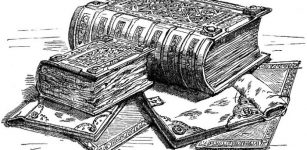 ‘The Domesday Book’ Of William I The Conqueror: Detailed Register Of ‘Who Owned What’ In England
Ancient History Facts | Jan 11, 2017
‘The Domesday Book’ Of William I The Conqueror: Detailed Register Of ‘Who Owned What’ In England
Ancient History Facts | Jan 11, 2017 -
 Mysterious ‘Las Labradas’ Petroglyphs With Roots In The Pre-Columbian Times Of Mexico
Featured Stories | Oct 9, 2020
Mysterious ‘Las Labradas’ Petroglyphs With Roots In The Pre-Columbian Times Of Mexico
Featured Stories | Oct 9, 2020 -
 Ants May Hold the Clues Why The Human Brain Decreased In Size 3,000 Years Ago – Scientists Say
Archaeology | Oct 22, 2021
Ants May Hold the Clues Why The Human Brain Decreased In Size 3,000 Years Ago – Scientists Say
Archaeology | Oct 22, 2021 -
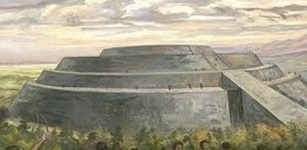 Cuicuilco Circular Pyramid: Ancient Astronomical Observatory And Place Of Power
Civilizations | Aug 24, 2021
Cuicuilco Circular Pyramid: Ancient Astronomical Observatory And Place Of Power
Civilizations | Aug 24, 2021


